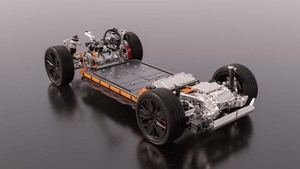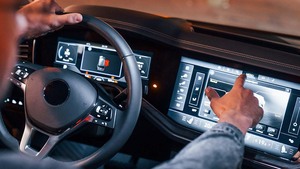Low Emission Zones and fleet impact
The creation of Low Emission Zones is clearly a necessary to step to reduce traffic congestion and improve air quality in major cities. The question is how this affects fleet choice in the future and how your drivers are alerted to the growing number of Low Emission Zones.
Virtually all of the cities that have so far taken action are targeting the most polluting diesels. However, newer diesels and also petrol driven vehicles will be affected over the next few years.
Below is summary of the key countries and their approach in reducing traffic, congestion and city CO2, NOX and SOX levels.
Benelux
In Belgium, Brussels is gradually introducing a Low Emissions Zone system. At the moment, only Euro-1 or non-Euro diesel engines are banned. This measure will be extended to other diesel and petrol cars over the coming years. The zone covered is the whole of the Brussels Capital Region’s 19 communes. Antwerp has a similar system in place, and is also set to extend it. Fleet drivers to Belgium have been advised to keep themselves informed via the website: www.lez-belgium.be. The website provides information on all existing and planned Belgian low emission zones.
In the Netherlands, there is a national and uniform system of Low Emissions Zones, which is starting with high pollution vehicles such as trucks. This will gradually be extended to other vehicles. Number plate recognition cameras are in place to recored vehicles. To date, the network covers Amsterdam, Rotterdam, The Hague, Eindoven, Utrecht, Maastricht and many more.
Luxembourg has no system in operation but is considering the banning of HGVs from Luxembourg city.
France
In Paris, the system works via the Crit’Air windscreen sticker. Drivers send their vehicle registration document and a small fee (around 4 Euros) and receive a sticker with their car’s environmental rating, from 0 (electric) to 5 (Euro-2 compliant).
On high pollution days, only the cleaner categories are allowed to drive in the low emission zones of Paris. The overall zone is Paris intra-muros, but the périphérique and one or two major thoroughfares, are not included.
This system was recently used, in July / August 2018 during the hot weather when only categories 0 to 3 were allowed to drive in Paris and several other urban areas. Category 5 vehicles are banned all year long from 8.00 am to 8.00pm during weekdays.
Other Crit’Air cities
Grenoble, Lille, Lyon, Strasbourg and Toulouse (normally with their greater metropolitan areas) have also adopted the Crit’Air system. Other cities are planning to follow Paris. In particular: Bordeaux, Clermont-Ferrand, Marseille-Aix-en-Provence, Metz, Montpellier, Nancy, Nantes, Nice, Orléans, Rennes, Rouen, Saint-Etienne, Toulon, Tours and Valenciennes.
Germany
Like Paris, drivers in Germany are required to have a special environmental sticker on their vehicle in order to enter the ‘green zone’ of most German cities. This law applies to anyone driving in Germany, whether a resident or a foreigner. It is important to note that even if the car meets German/EU pollution standards, a driver can still be fined if there is no sticker on the windshield. Almost every German city or town of any size now requires a green-zone sticker. The stickers are green, yellow or red depending on the level of emissions of the car. Stickers are available from the TÜV either online or at an office. They are valid for the lifetime of the vehicle.
The following German cities and towns had restricted environmental zones as of early 2016: Aachen, Augsburg, Berlin, Bochum, Bonn, Bottrop, Bremen, Cologne Dortmund, Duisburg, Düsseldorf, Erfurt, Essen, Frankfurt am Main (and its region: Offenbach, Siegen), Freiburg (Breisgau), Gelsenkirchen, Halle (Saale), Hanover, Heidelberg, Herrenberg, Ilsfeld, Karlsruhe, Leipzig, Leonberg, Ludwigsburg, Mannheim, Mühlacker, Mülheim an der Ruhr, München (Munich), Münster, Neu-Ulm, Neuss, Nuremberg, Oberhausen, Osnabrück, Pfinztal, Pforzheim, Pleidelsheim, Recklinghausen, Reutlingen, Ruhr region, Schwäbisch-Gmünd, Stuttgart, Tübingen, Ulm, Wuppertal.
Italy
Many Italian cities have ZTL areas, or restricted traffic areas, along with Low Emissions Zones. These cities include Rome, Milan, Florence and Pisa, but the list runs into dozens and the ZTL zones are designed to avoid further structural damage to the historical centres of the cities.
Driving into a ZTL without the appropriate authorisation will lead to a fine. In nearly all cases tourists and non-residents are forbidden from being issued passes. Only local drivers are allowed to drive in these zones. The fines for crossing into a ZTL boundary are issued by ticket-cameras placed at the entrance of each zone.
In Rome, traffic is banned on Sundays to try and ease the smog, and the police hand out fines. All vehicles except motorbikes and electric cars are involved, but drivers of electric cars have to get official permission. This is a complex setup with six schemes in operation just around Rome.
Spain
Looking at Spain’s two principal cities, Barcelona has a camera-enforced Low Emissions Zone in place and Madrid is considering following suit. Certain other Spanish cities have emergency schemes in place, but the likelihood is that these will become more structured over time.
In most cases, vehicles registered outside of the country concerned are also required to comply with the regulations. They register with the city authority or pay he fee in the same way as nationally registered cars.
UK
In London, the whole of the inner city – roughly from Vauxhall in the south to Clerkenwell in the north, and Marylebone in the west to the City in the east – is defined as the Congestion Charge area. Vehicles pay a charge of £ 11.50 (€ 14.00) per day to drive inside the zone, between 7.00 am and 6.00 pm on weekdays. The charge enables a vehicle to enter and leave the zone as many times as it wishes within one day. Drivers can pay in advance, on the day of travel or the next day. In this last case, the charge goes up to £ 14.00 (€ 16.50). The system uses cameras to recognise number plates.
Other UK cities including Manchester and Glasgow, for example, are currently considering implementing Low Emissions Zones.
Check before driving
This list is by no means exhaustive. The whole domain of anti-pollution is evolving and it is worth checking the local authority regulations for any major European city before sending fleet drivers there.
To summarise, there are different objectives in mind for low emission zones.
- To improve the quality of air
- To decrease congestion
- To protect historical architecture from exhaust-induced degradation.
This trend is only going in one direction. With more and more cities choosing to introduce low emission zones, the choice of powertrain will drastically impact on the mobility options of your job need drivers. Your fleet strategy has to be robust and ready for these changes ahead.



